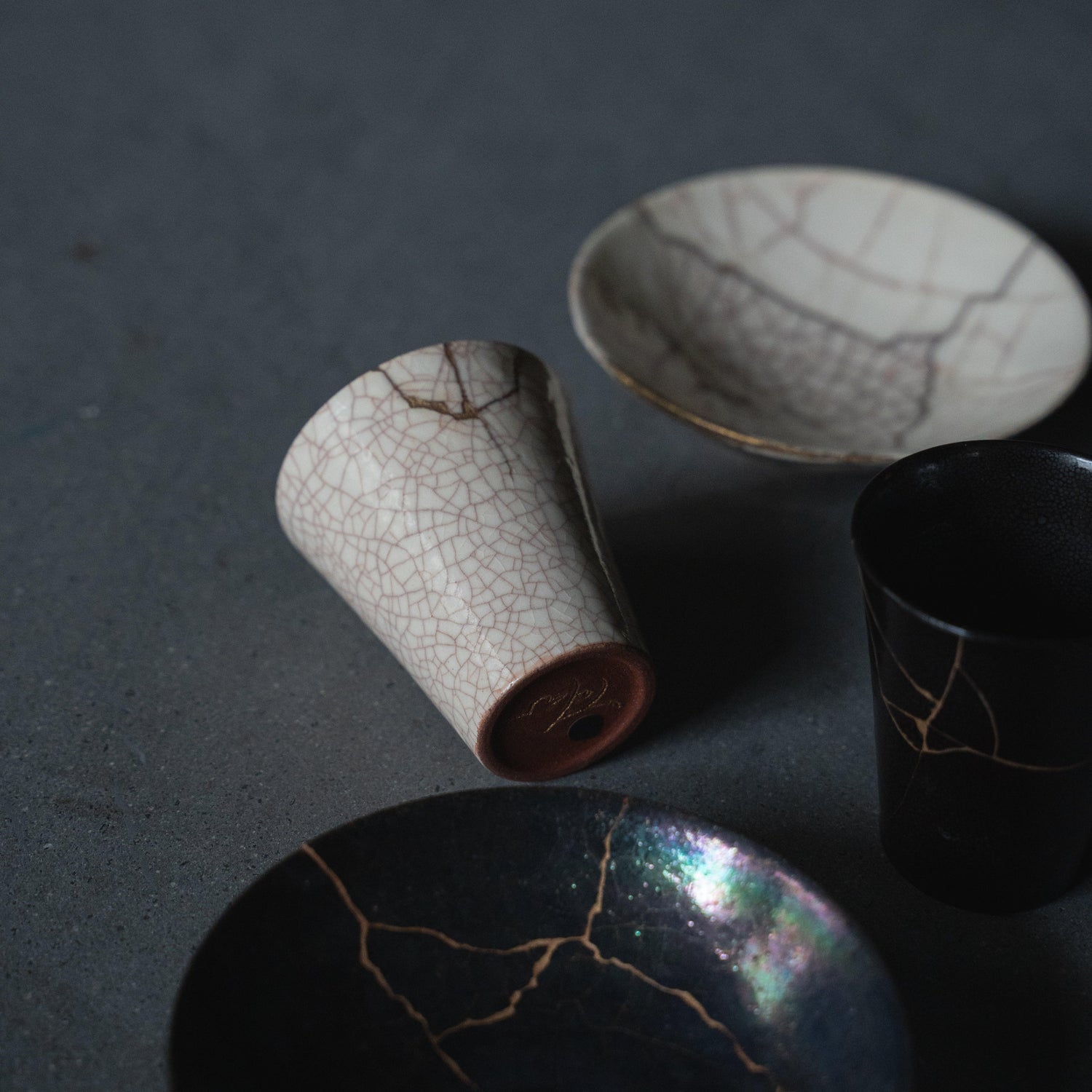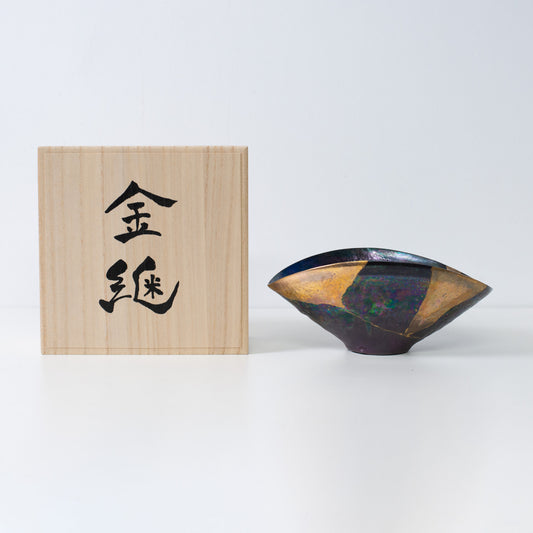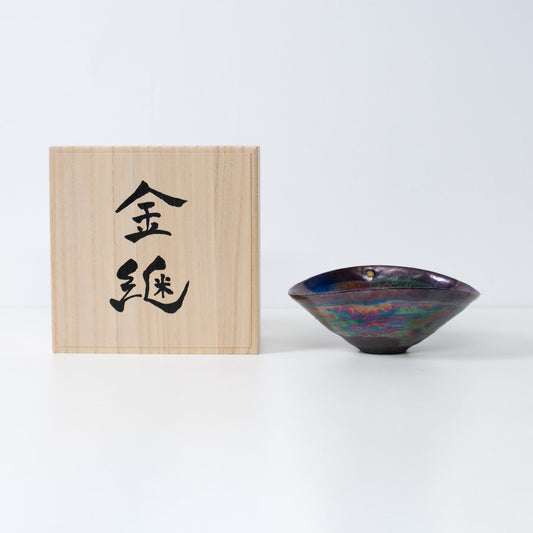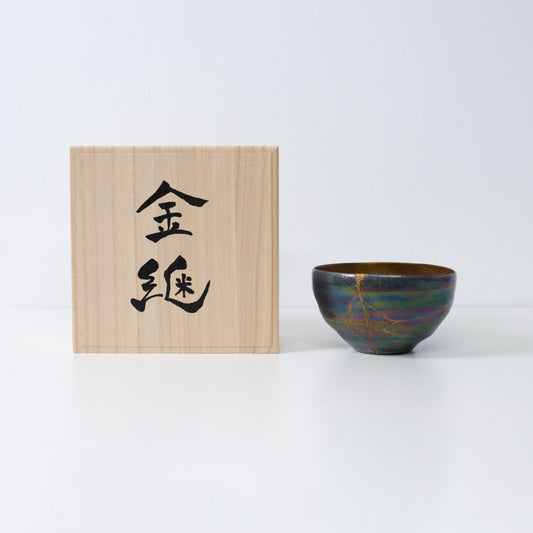
Kintsugi Meaning & Philosophy: The Art of Resilience
Share
Instead of discarding broken objects, Kintsugi is a traditional technique that restores broken objects giving them a new life instead of discarding them. It involves mending broken ceramics with lacquer mixed with gold, silver, or other precious metals. Kintsugi has been passed down alongside Japan's tea ceremony culture and the concept of "wabi-sabi." In recent years, it has gained attention beyond its technical aspects as a repair method. It's now recognized as an art form symbolizing Japanese aesthetics and philosophy, celebrating the beauty of imperfection and the process of rebirth.
Table of contents
History of Kintsugi: The Wabi-Sabi Aesthetic and the Birth of Kintsugi
The origins of Kintsugi can be traced back to the 15th century. When a prized tea bowl belonging to Ashikaga Yoshimasa, a powerful figure at the time, was broken, he sent it to China for repairs. However, he was dissatisfied with the simple metal staples used to mend it. This led to the creation of Kintsugi. Using lacquer and gold, the bowl was not only repaired but the cracks were also decorated with gold, transforming the breakage into a beautiful adornment rather than concealing it.
The Kintsugi technique born at this time became deeply intertwined with Japan's tea ceremony culture and evolved into an art form embodying the "wabi-sabi" aesthetic. "Wabi-sabi" is a Japanese aesthetic concept championed by the tea master Sen no Rikyū. It consists of "wabi," which actively appreciates imperfection, such as setbacks and despair, as beauty, and "sabi," which originates from the word "lonely." This unique Japanese aesthetic resonates strongly with the essence of Kintsugi. The "imperfect beauty" that "wabi" signifies is found in the brokenness and impermanence of a cracked vessel. Kintsugi embraces this, finding beauty within these qualities rather than rejecting them.
Kintsugi is a story of rebirth that begins with a single broken vessel. Instead of hiding the scars of cracks and chips, it emphasizes them with gold ornamentation. It's a technique that doesn't deny the broken past but accepts it, creating new value.
Kintsugi Meaning and Philosophy: Embracing Imperfection, Finding Strength
Kintsugi encompasses a profound meaning and philosophy beyond mere repair, reflecting an aesthetic perspective on the way people live. It's the idea of accepting imperfection and impermanence and transforming them into something valuable.
From this perspective, a person's life is also like a vessel. We get hurt and sometimes break through various experiences as we live. But Kintsugi teaches us: scars are proof that you've overcome difficulties, and imperfection is your unique beauty.
In today's society, perfection is often emphasized. However, Kintsugi represents an opposing viewpoint. It teaches us to accept imperfection rather than striving for perfection, and to find new beauty and value within it. This resonates with self-acceptance and emotional healing, a crucial concept that modern people may be forgetting.
The Healing Power of Kintsugi: Resilience, Rebirth and Hope
Kintsugi's significance extends beyond the physical restoration of objects; it also carries the meaning of rebirth and hope.
In Japan, which has historically experienced many natural disasters like earthquakes and floods, the idea behind Kintsugi—that overcoming life's hardships and trials leads to growth, becoming stronger and more beautiful—has taken root in people's hearts. There are several examples of people who, after the major earthquakes in the 2000s, tried to heal and encourage others by offering free Kintsugi repairs for damaged vessels.
For those who have experienced personal trauma or loss, Kintsugi can become a source of healing for emotional wounds and provide the courage to move forward. It's a message of mending a broken heart and finding new hope.
The Art of Kintsugi: From Philosophy to Masterpiece
Understanding the philosophy is distinct from witnessing the actual craft. Kintsugi demands remarkable technical skill; it is not a mere hobbyist’s adhesive repair but a work of fine art. A true master transforms a broken object into a landscape. The golden lines resemble rivers flowing across the ceramic surface, adding a unique value that did not exist before the breakage.
Taku Nakano: The Fusion of Tradition and Modernity
Taku Nakano, based in Minami-Aoyama, Tokyo, is an artist who transcends the role of a mere restorer, exploring a unique style that fuses ceramics with Kintsugi. Using motifs of the "universe" and "celestial bodies," he creates works that employ rare metals, glass, and natural lacquer. While grounded in traditional techniques, his flexible creativity—such as combining ceramics and glass—has produced pieces that captivate many pottery enthusiasts and collectors.
His solid technical skills and track record have earned him high acclaim internationally. Most notably, he was officially commissioned by the Georgian government to repair a historic wine jar using Kintsugi. This piece was displayed as a symbol of the cultural fusion between Georgian wine and Japanese Kintsugi. He continues to adapt Kintsugi to fit modern lifestyles and shares this vision with the world.
The most distinctive feature of Nakano's approach is his creative practice of "upcycling" vessels he crafted from clay himself, using Kintsugi to add new value. This process is not a denial of the past; rather, by joining different materials, he evolves the object into something more robust and beautiful than it was before. He has taught over 2,000 students, including notable figures, and his knowledge, technique, and innovative sense are leading the next generation of Kintsugi culture.
Hakuichi (The Brilliance of Kanazawa Gold Leaf)
Hakuichi is a brand that inherits 450 years of traditional techniques in Kanazawa City, Ishikawa Prefecture, a region responsible for 99% of Japan's gold leaf production. Employing master artisans, they create a wide range of products—from traditional crafts to modern interiors—using advanced skills to manipulate gold leaf as thin as 1/10,000th of a millimeter. Its unrivaled radiance brings the history of the ancient city and the soul of the craftsmen into the present day.
Hakuichi has elevated the Kintsugi philosophy of "rebirth" and "harmony" into Kintsugi-themed wall art, allowing these concepts to be incorporated into the entire living space rather than just vessels. The striking gold lines running across the deep black panel express a sense of strength found within silence. This art proposes a new form of home decor, where the aesthetics of Kintsugi can be displayed on a wall and enjoyed as part of the daily scenery.
Harmonizing with contemporary living rooms and entryways, this wall art creates a sophisticated, modern atmosphere. It is available in two sizes to fit your space and two colors to blend with your interior style, and can be hung vertically, horizontally, or arranged in combination. Imbued with Japanese aesthetics, this art brings depth and a serene beauty to any room.
Kintsugi Gift Ideas: Unique and Meaningful Gifts for Loved Ones
People from all over the world visit Taku Nakano, a Kintsugi master with a workshop in Omotesando, Tokyo, seeking Kintsugi vessels as gifts for those who have overcome illness, injury, or hardship, or as mementos to reconcile between lovers or deepen bonds with loved ones. For those who have faced difficulties, or for those who have been hurt, a Kintsugi vessel becomes a symbol celebrating their strength and resilience.
Due to the nature of Kintsugi as a technique to repair broken vessels, even in Japan, it's very difficult to purchase vessels repaired with genuine lacquer and gold. However, as a ceramic artist and Kintsugi artist, Taku Nakano creates Kintsugi works by breaking vessels he crafts from clay himself and then repairing them with authentic lacquer and gold.
Taku Nakano has received requests from foreign governments to repair valuable ceramics with Kintsugi, as well as requests from individuals to repair cherished vessels and from companies to conduct Kintsugi workshops. Through Kintsugi, he has conveyed the philosophy of rebirth and hope to people worldwide. All of Taku Nakano's Kintsugi works are one-of-a-kind, so while the quantity is limited, they can be purchased at his workshop or exclusively online through Millennium Gallery Japan.
If you wish to gift the philosophy of Kintsugi not just as a vessel but as an interior piece that enriches the living space itself, Hakuichi’s wall art is another excellent option. Crafted by artisans skilled in Kanazawa’s traditional gold leaf techniques, this art proposes a new style—displaying the Kintsugi spirit of "rebirth" and "harmony" on the wall. It harmonizes beautifully with modern living rooms and offers a choice of sizes and colors. As a special gift for housewarmings or celebrating new beginnings, it brings a sense of serene strength and beauty to any space.
What Kintsugi Teaches Us
Kintsugi teaches us to face life's challenges and embrace failures and setbacks positively. As a testament to overcoming difficulties and as a special gift for loved ones, Kintsugi is a Japanese technique and culture with profound meaning.
When you want to express your feelings to someone dear, we hope that the Kintsugi works by Taku Nakano and Millennium Gallery Japan serve as a meaningful gesture to those who are hurting.
When you wish to express your deepest feelings to a loved one, or simply seek to find peace within yourself, we hope the Kintsugi works by Taku Nakano and Hakuichi can offer support. Kintsugi vessels that serve as testaments to overcoming adversity, and wall art imbued with a quiet strength, will stand by wounded hearts and bring genuine healing. Carrying stories of rebirth, we trust these works will serve as meaningful choices that bring a new light to your life.



























